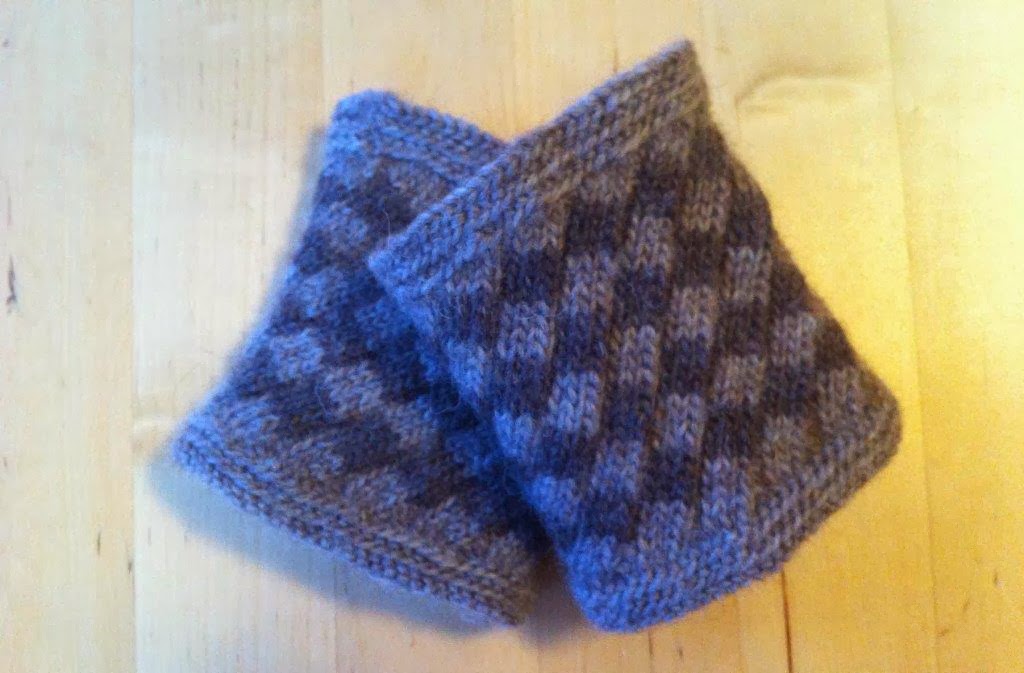Mer information om kurserna finns på Dala-Flodas värdshus hemsida.
I have taken classes at Dala-Floda arranged by Anna-Karin Jobs Arnberg and Karin Kahnlund and it has been very rewarding experiences. Now that this years courses have been decided, I want to help spread the information. More information (Swedish only) can be found on the Dala-Floda Inn´s home-page. The courses are held in Swedish.
Tvåändsstickning 29 maj-1 juni 2014 / Twined knitting May 29 - June 1
Lite info om kursen: Studie av tvåändsstickning, både praktiskt och kulturhistoriskt. Huvudlärare är Karin Kahnlund, erfaren kursledare inom tvåändsstickning och Anna-Karin Jobs Arnberg, intendent på Nordiska muséet. Du bör ha grundkunskaper i tvåändsstickning.
Under några dagar får du möjlighet att fördjupa dig i tvåändsstickningen från Floda men vi gör även utblickar till grannsocknarna. Du får möjlighet att prova olika tekniker och mönster, studera äldre plagg och titta på samlingar, rita av mönster, göra kavelfransar på olika sätt samt prova på att brodera Flodas typiska broderi ”påsöm” som är vanligt på vantar och andra stickade plagg. Se: Kursprogram 2014
Under kursen får du prova på att brodera ”påsöm” på flodavis, flerfärgsvirka som i Nås, tvåändssticka och göra fransar som i Västerdalarna. Kursledare i tvåändsstickning är Karin Kahnlund, lärare i stickning vid HV-skola och erfaren kursledare i bl.a. tvåändsstickning. Kursledare i broderi och virkning är Anna-Karin Jobs Arnberg, textilintendent vid Nordiska museet och tidigare länshemslöjdskonsulent med gesällbrev i broderi.
Förr var folket i byarna kring Västerdalälven kända för sina textila skicklig- heter i olika tekniker. I Malung bedrevs skinntillverkning, flerfärgsvirkning i Nås, påsömsbroderier och vävning i Dala-Floda samt knyppling i Mockfjärd och Gagnef. Det textila hantverkskunnandet var starkt kopplat till tillverkningen av dräktplaggen. Speciellt i Floda och i Nås har man älskat att dekorera med färgsprakande rosor. Stjärnliknande mönster, som är vanligt i tvåändstickningen, har i dessa trakter också kallats för rosor. Se program: Rosor i Broderi 2014.
Påsömkurs, yllebroderi i Dala-Floda, 23-26 juni 2014 /Wool embroidery in Dala-Floda, June 23-26 2014.
Välkommen till kurs i yllebroderi-”påsöm”. Kursledare är Anna-Karin Jobs Arnberg, textilintendent vid Nordiska museet och tidigare länshemslöjds- konsulent. Hon har även gesällbrev i broderi.
I Dala-Floda syr man yllebroderier i många färger på ylletyg. Stygn som plattstygn, schattersöm, klyvstygn, stjälkstygn är vanliga och man bygger upp blomster och bladslingor med hjälp av pappersmallar. Broderierna utfördes ursprungligen på delar av folkdräkten och har genomgått en utveckling från enkla slingor till frodiga yllebroderier. Under kursen gör vi två utflykter. Den första går till Wålstedts ullspinneri som ligger i Dala-Floda. Där får du följa den svenska lantrasullen från otvättad ull till färgat glansigt garn av högsta kvalitet. Den andra utflykten går till en fäbod där vi äter lunch och broderar ute i naturen. Se program: Påsömkurs 2014.



















